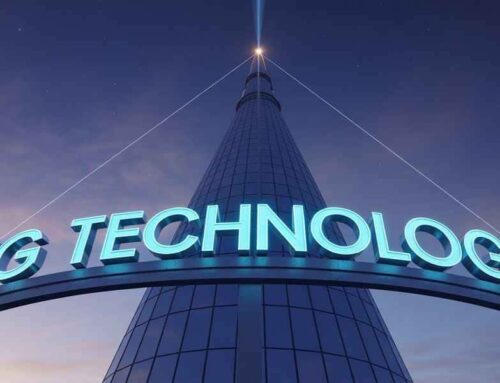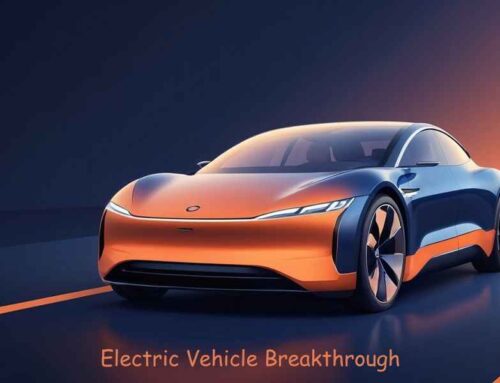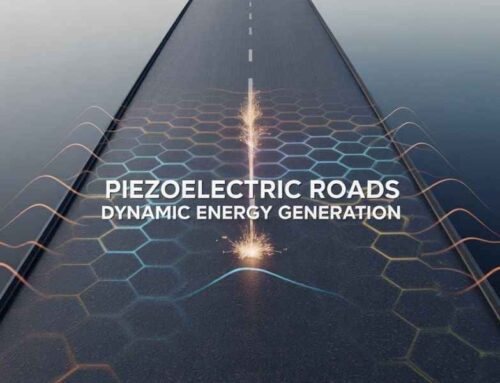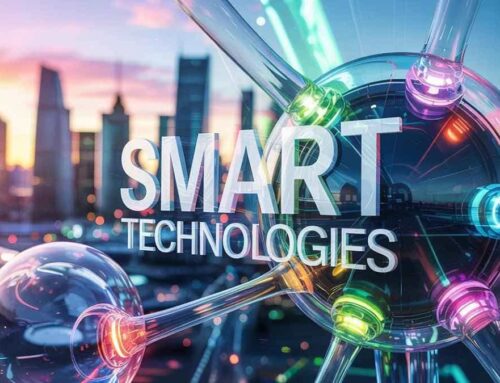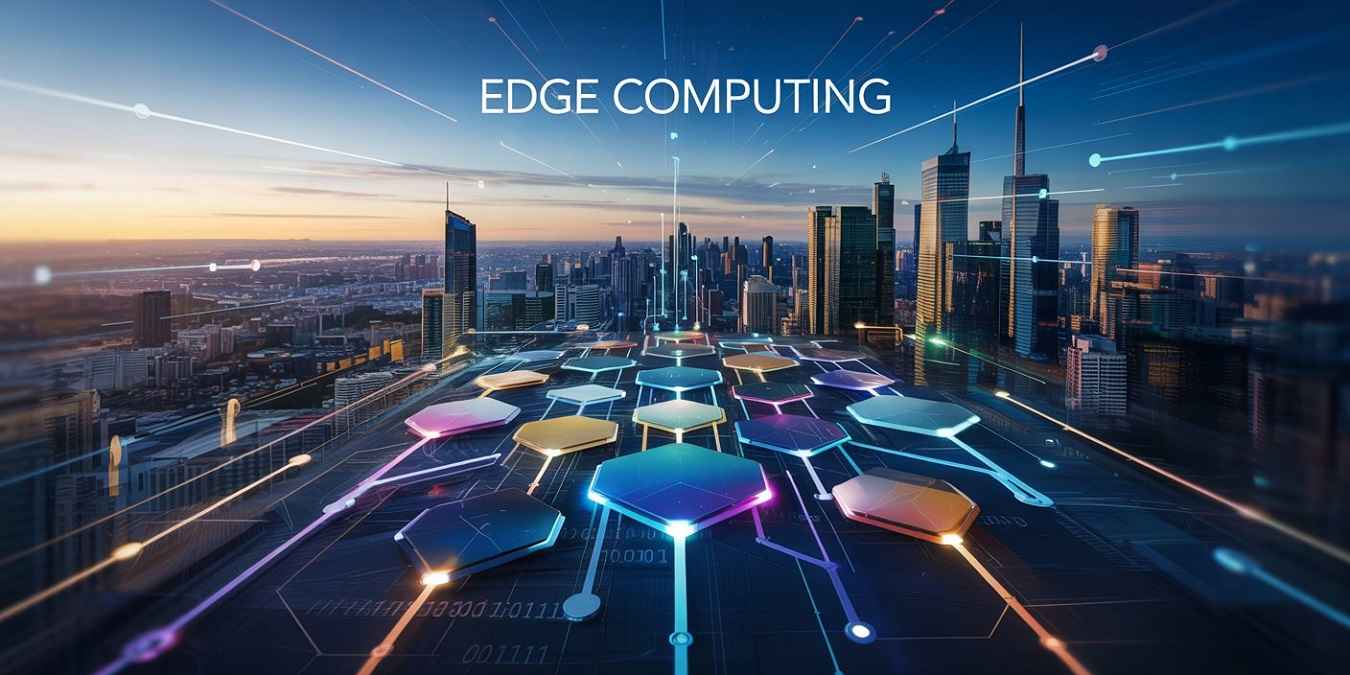
What is Edge Computing? A Simple Explanation
At its core, edge computing is about moving data processing closer to the source. Instead of sending all information to a distant cloud server, edge devices, like sensors, routers or even your smartphones, handle computations locally. This reduces latency (The delay between action and response), conserves bandwidth and enhances security by keeping sensitive data on-site.
Think of it like a relay race: In traditional cloud computing, every piece of data has to sprint all the way to the cloud before it can be processed. Edge cuts that distance short, handing the baton to local devices so they can act immediately.
As Tim Berners-Lee, the inventor of the World Wide Web, once said, “The power of the Web is in its universality. Access by everyone regardless of disability is an essential aspect.” Edge amplifies this universality by ensuring technology can respond instantly, even in remote or resource-limited environments.
Why Edge Computing Matters Now More Than Ever
Imagine this: You’re driving down the highway and your car’s sensors detect a pedestrian stepping into the road. In a fraction of a second, your vehicle must process that data, decide to brake and execute the action, all before a collision occurs. This isn’t science fiction; it’s a reality made possible by edge computing, which processes information at the “Edge” of the network, right where the action happens.
But Edge isn’t just about cars. It’s the unsung hero behind everything from real-time language translation apps to smart cities that manage traffic and energy use. The question isn’t whether edge computing is important, it’s how it’s transforming industries and empowering smarter tech to solve problems we once thought unsolvable.
Why “Edge” is the Future of Smarter Tech
-
Lightning-Fast Speed
Speed is the lifeblood of modern tech. Every millisecond counts in applications like autonomous vehicles, financial trading or emergency response systems. Edge computing eliminates the lag caused by sending data to the cloud and back, enabling real-time decision-making. For instance, in healthcare, edge-powered devices can analyze ECG readings on-site and alert doctors to heart irregularities before they become crises.
Ask yourself: How many moments in your daily life rely on split-second tech responses? Edge computing is making those moments safer, smoother and more reliable.
-
Scalability for the IoT Revolution
The Internet of Things (IoT) is exploding and by 2030, there could be 29 billion connected devices worldwide. Managing all that data through a centralized cloud is impractical. Edge computing decentralizes processing, allowing devices like smart thermostats, industrial sensors or even smartwatches to work autonomously. This scalability ensures smarter tech can grow without crumbling under its own weight.
-
Enhanced Security and Privacy
Sending data to the cloud means exposing it to potential breaches during transit. Edge computing minimizes this risk by processing data locally. For example, a factory using edge-powered robots can analyze production data on-site, avoiding the need to send sensitive information over the internet. As cybersecurity expert Bruce Schneier noted, “The problem is not technology. The problem is people.” Edge computing reduces human error by simplifying data pathways.
-
Cost Efficiency
Streaming data to the cloud costs money, both in bandwidth and storage. Edge computing reduces these expenses by only sending essential data to the cloud. A retail store with edge-enabled cameras, for instance, can analyze foot traffic locally and send only aggregated insights to the corporate office, saving on data transfer fees.
Edge Computing in Action: Real-World Examples
Healthcare: Remote Patient Monitoring
Wearable devices like glucose monitors or heart rate trackers use edge computing to analyze data locally. Instead of waiting for cloud feedback, these devices can alert patients or doctors immediately if a critical threshold is breached. This not only saves lives but also empowers smarter tech to democratize healthcare access, even in underserved regions.
Manufacturing: Predictive Maintenance
On factory floors, sensors embedded in machinery use edge computing to predict equipment failures before they occur. By processing vibration or temperature data locally, systems can schedule repairs during off-hours, minimizing downtime. As Peter Drucker, the management guru, said, “Efficiency is doing things right; effectiveness is doing the right things.” Edge computing ensures both.
Smart Cities: Traffic Management
Imagine a city where traffic lights adjust in real-time based on congestion. Edge computing makes this possible by analyzing data from cameras and sensors at intersections, reducing gridlock without relying on a centralized system. This is smarter tech in action, turning urban chaos into harmony.
Gaming and AR/VR
Gaming platforms like Xbox and PlayStation use edge computing to reduce latency, ensuring seamless multiplayer experiences. Similarly, Augmented Reality (AR) apps for construction or training can process 3D models locally, enhancing accuracy and responsiveness.
Edge vs. Cloud: A Symbiotic Relationship
Some might ask, “Why not just rely on the cloud?” The answer lies in balance. The cloud excels at storing vast amounts of data and running complex analytics. Edge computing complements it by handling time-sensitive tasks locally. Think of it like a hybrid engine, both components are necessary for optimal performance.
As tech visionary Ray Kurzweil put it, “Technology evolves exponentially.” Edge and cloud computing together are accelerating that evolution, offering the best of both worlds: instant action and deep analysis.
The Future of Edge Computing: What’s Next?
The edge computing revolution is just beginning. Here’s what’s on the horizon:
- 5G and Edge Collaboration: With 5G’s ultra-fast speeds, edge computing will enable even more data-intensive applications, like holographic telepresence or real-time global simulations.
- AI Integration: Edge devices will increasingly run AI models locally, from personalized recommendations on streaming services to AI-driven climate sensors in agriculture.
- Edge-Cloud Hybrid Models: Companies like AWS and Microsoft are already building hybrid infrastructures, giving users the flexibility to choose where data is processed.
Your Invitation to the Edge
Edge computing isn’t just for tech giants, it’s for everyone. Whether you’re a developer building the next-gen app or a business leader seeking efficiency, embracing edge computing can unlock new possibilities.
Call to Action
- Explore Edge Solutions: Start with small-scale projects, like deploying IoT sensors in your workspace.
- Stay Informed: Follow industry trends and attend conferences on edge computing and AI.
- Collaborate: Partner with tech providers who specialize in edge infrastructure to future-proof your operations.
As we hurtle toward a world where every device is smarter, faster and more connected, edge computing is the silent force behind it all. It’s not just a technology, it’s a catalyst for innovation.
Final Thought
The poet T.S. Eliot once wrote, “We shall not cease from exploration. And the end of all our exploring will be to arrive where we started and know the place for the first time.” In the realm of Edge, we’re not just exploring new technologies, we’re reimagining the very foundations of how technology serves humanity. The future is here. Will you be ready?
Frequently Asked Questions (FAQs)
- Q: What is edge computing and why is it important?
A: Edge computing is a distributed computing paradigm that processes data closer to its source, like sensors, devices or local servers, rather than relying solely on centralized cloud servers. It’s important because it reduces latency, enhances real-time decision-making and supports smarter tech by enabling faster responses in applications like autonomous vehicles, healthcare and smart cities.
- Q: How is edge computing different from cloud computing?
A: Cloud computing processes data in centralized data centers, while edge computing processes it locally, near the source. This distinction makes edge computing faster (Less Latency) and more efficient for time-sensitive tasks, whereas the cloud excels at storing vast amounts of data and running complex analytics.
- Q: What industries are already using edge computing?
A: Edge computing is transforming industries such as:
- Healthcare (Real-time patient monitoring).
- Manufacturing (Predictive maintenance).
- Retail (Smart inventory management).
- Transportation (Autonomous vehicles).
- Smart Cities (Traffic and energy management).
- Q: How does edge computing improve security?
A: By processing data locally, edge computing reduces the risk of cyberattacks during data transmission to the cloud. It also minimizes exposure of sensitive information, making it ideal for industries like finance or healthcare where privacy is critical.
- Q: What are the main benefits of edge computing?
A: Key benefits include:
- Reduced latency (Faster response times).
- Lower bandwidth costs (Only critical data is sent to the cloud).
- Enhanced reliability (Operations continue even with poor internet).
- Scalability (Supports the growing IoT ecosystem).
- Q: How does edge computing work with 5G technology?
A: 5G’s ultra-low latency and high-speed connectivity amplify Edge’s capabilities. Together, they enable real-time applications like augmented reality, remote surgery and industrial automation, where milliseconds matter.
- Q: Is edge computing expensive to implement?
A: Costs depend on the scale, but Edge can reduce long-term expenses by cutting cloud storage/bandwidth fees. Many platforms (Examples, AWS Greengrass, Azure IoT Edge) offer scalable, cost-effective solutions for businesses of all sizes.
- Q: Can edge computing handle AI and machine learning?
A: Yes! Edge devices can run AI models locally, enabling applications like facial recognition on smartphones or predictive analytics in factories. This “Edge AI” combines the power of AI with the speed of edge processing for smarter tech.
- Q: What challenges does edge computing face?
A: Challenges include:
- Complexity in managing decentralized systems.
- Power consumption for edge devices.
- Standardization across hardware and software ecosystems.
- Q: How can small businesses benefit from edge computing?
A: Small businesses can use edge computing to:
- Optimize workflows (Example, Inventory Tracking).
- Improve customer experiences (Example, Real-Time Chatbots).
- Reduce operational costs by avoiding cloud over-reliance.
- Q: Is edge computing environmentally friendly?
A: Yes! By reducing data travel distance, Edge cuts energy use compared to cloud-centric models. It’s a key player in sustainable tech, supporting eco-friendly initiatives like smart grids and green manufacturing.
- Q: What’s the future of Edge?
A: The future is hybrid, combining edge and cloud for optimal performance. Expect growth in edge-AI integration, 5G-enabled applications and edge solutions for emerging technologies like digital twins and metaverse platforms.
- Q: How do I start implementing Edge?
A: Begin with a pilot project (Example, Deploying IoT Sensors), choose edge-friendly tools (Like Raspberry Pi or AWS Greengrass) and partner with providers experienced in edge solutions. Start small, then scale as needed!
- Q: Can Edge help with disaster response?
A: Absolutely! Edge-powered systems can analyze real-time data from disaster zones (Examples, Earthquakes or Wildfires) to guide emergency teams, even without stable internet connections.
- Q: Is Edge right for my business?
A: If your operations require real-time data processing, low latency or localized decision-making (For example, Logistics, Healthcare or Retail), Edge is a game-changer. Assess your needs and start experimenting!

